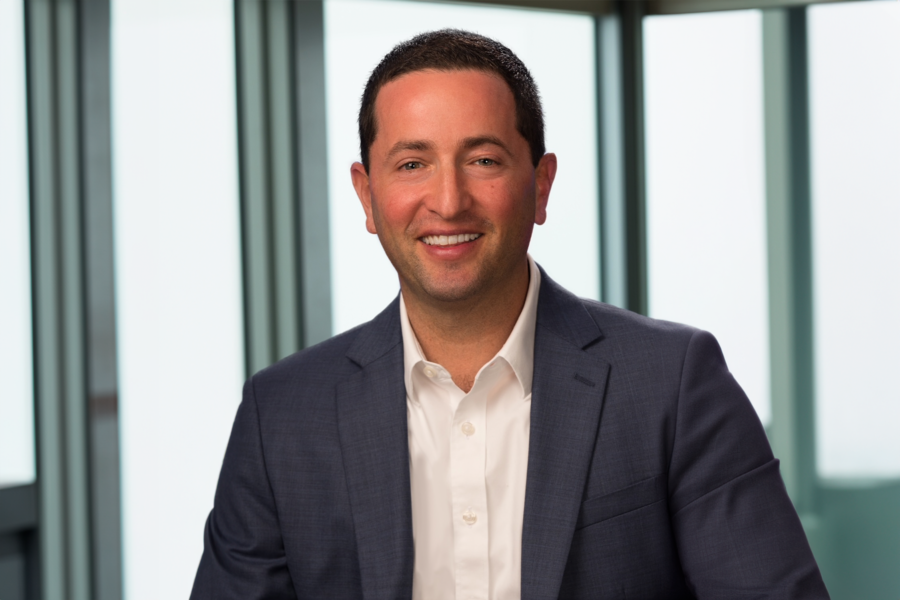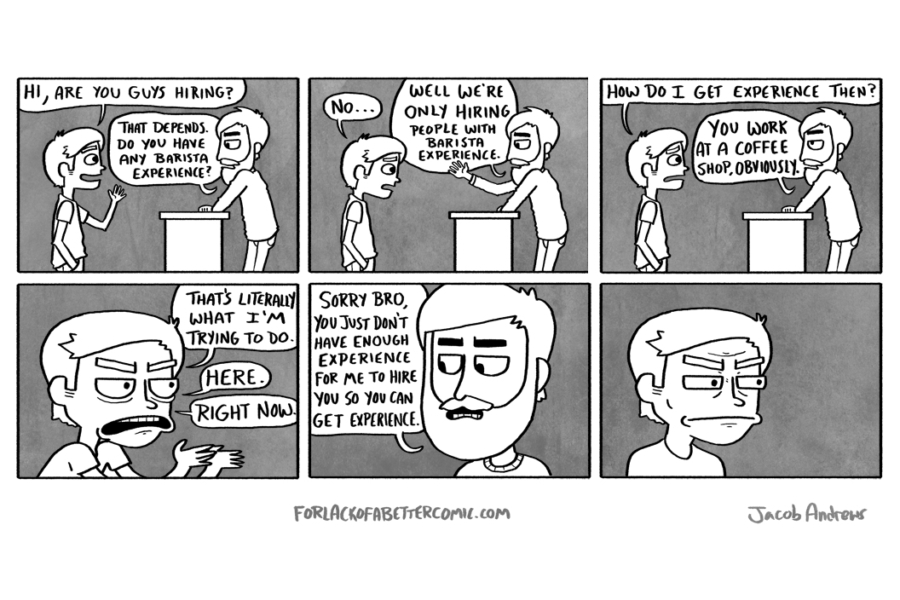Key Takeaways:
- Employee listening is critical – you may surface important data about what your employees value that you didn’t expect!
- Internal mobility opportunities can drive retention but there are three big barriers: visibility and ease of access, strong managers, and the right technology.
- “Soft skills”, data literacy, and managerial skills are still areas where learning experiences, not just content, are critical.
- In the next 12-24 months, Heads of Talent and People are going to double down on and invest in retaining the best talent.
For this issue of People Matters, we are excited to interview David Landman, Global Head of Talent Development at Goldman Sachs. David has spent the last two decades working on the people team at Goldman, supporting their nearly 40,000 employees in their growth and development.
In this interview, David shares how Goldman prioritized building the capability to survey and listen more closely to employees, the importance of internal mobility, and the type of learning content that is most in demand.
This interview has been edited for brevity and clarity.
Can you share your journey into the world of talent development?
I went to a small liberal arts college in Pennsylvania. I was studying psychology, because I was really interested in understanding how people think and what drives their behaviors — the science behind people. I also was really interested in business, but I didn’t know that psychology and business could go together. I had a chance encounter with a CHRO and practicing Industrial / Organizational psychologist who opened my eyes to the field of HR — a perfect blend between my interest in human behavior and business.
I ended up getting my Ph.D. in Organizational Psychology and the first summer of my graduate program I did an internship at Goldman Sachs in HR, and I absolutely loved it. I enjoyed working hard to solve interesting problems with people who were really committed and passionate about what they were doing. And that led to what is now a 20-year career in HR.
Working in Talent Development, I have the privilege of designing programs that serve to attract, develop, and retain the people of Goldman Sachs. I do it by providing them with growth opportunities and helping them feel happier and more fulfilled at work. What we design here in Talent Development, scales out to the entire organization.
What are some programs or initiatives that you’re really proud of?
Two things that I enjoy doing is building new businesses and capabilities, and also transforming things that aren’t working as well and making them more effective. I’ll share an example of both.
Several years ago I saw an opportunity for us to build out an employee listening function, before it was really a well-known capability. Ultimately, I wanted a better way to tap into the perspectives of our employees to more deeply understand their needs and see how our efforts were landing in terms of their experience.
At the time, I discovered Qualtrics and really loved how they were making it easier for companies to ask questions of their employees in a scalable way and analyze the data into real and actionable insights. So I built a team and started to look for big and quick wins in the employee listening space to get traction for this concept. Over the years, active employee listening became a robust practice with a lot of credibility because it made a real difference in informing our people strategy.
For example, we did a really interesting study to better understand what people valued in terms of benefits and used that to launch several new products and offerings to our people. We also do a people pulse on a regular cadence, which involves a series of pointed questions to understand how people are experiencing the workplace. And it’s gotten the attention of our senior leaders and it’s become one of the really important barometers for how we’re doing as a people function.
For the second initiative: There was a time when we did employee performance reviews once a year and we tried to pack a lot of stuff into that one moment. We were hearing from our people that they wanted more support from their managers, more frequent conversations and more focus on their growth.
We ultimately designed something called the Three Conversations at Goldman Sachs — three important touchpoints for managers and employees to connect at various points in the year to talk about what was important at that moment. Starting the year by having a light-touch goal-setting conversation about, as an individual, what will I do this year? What will I commit to in terms of my intentions? How does that connect to the bigger picture?
Mid-year check-in is conversation two, and that’s really coaching oriented. How as a manager, I want to help my team in succeeding in their intentions. And then lastly, at the end of the year, a look back on performance.
When we look at these initiatives, we’ve seen it make a real difference in the experience of our employees. For example, we saw very large gains in sentiment towards transparency, especially as it relates to performance and career growth.
Were there any interesting or surprising findings from that survey about employee benefits?
Having the right data enables good decision-making about where to invest. One of the things that we introduced as a follow-up to that survey was sabbatical benefits. Having time off to rest and recharge was really important to people. We also offered enhanced parental leave, adoption leave, and equal leave regardless of caregiver status. We also discovered that people were really focused on elder care, so we offered enhanced benefits there as well.
How do you think heads of talent measure the success of a solution and how has that changed over time?
CHROs and People teams have become more sophisticated. Both use more data to design, but then come back to that data and look at it longitudinally over time. To see what’s working, where we need to iterate and evolve, but also see things that we need to scrap because they’re not achieving the outcomes that we intend.
For example, if we’re designing a program to help increase retention, certainly over time we need to come back to measuring actual retention and trying to attribute it back to the program to see if it’s making a difference.
How do you think about internal mobility at large enterprises and the challenges of implementing it?
Now more than ever, people prioritize growth and skill development over a lot of other factors in the workplace. Both through the research that we’ve done and through our own internal experience and data, we know that internal mobility has a very strong positive multiplier effect on people’s perspectives of their growth and career potential. Done well, it reduces churn and increases employee engagement. It decreases the cost of hiring, onboarding, and integrating new employees.
One stat that I find really interesting comes from LinkedIn Learning. They looked at two different cohorts: people who moved internally and people who didn’t. At the two-year mark, somebody who moved internally had a 75% likelihood of staying with a company, and for those who didn’t it was only 56%. That’s a really big difference when you think about long-term retention impact.
In big organizations, a lot of internal mobility can come from people’s personal networks through the connections that they already have, which definitely works and appeals to a certain style of individual. But for others, there are three main barriers:
First is visibility and ease of access: helping people understand how their aspirations and skills align to different directions they can take their careers. Organizations need to do a better job at helping people see all of the opportunities available internally to find new jobs and continue to grow.
The second is ensuring that organizations have a supportive culture and it’s not just from the top, but where leaders, managers, and employees alike truly embrace the value of mobility and see it as a win-win proposition for everyone.
Lastly, when it comes to technology, it’s really about tools and resources to make this as easy as possible. As HR leaders, we can sometimes undervalue the impact of good tech to help drive change and the simple but effective support resources, conversation guides, and tools available that make a big difference in terms of outcomes.
There’s been an explosion of learning content and training providers over the last few years. Where do you think there is the most demand for new or innovative learning content?
I’ll share three areas. The first one is around teaching durable or transferable skills to prepare people to be successful in the workplace. Skills like collaboration, negotiation, communication. I think this is especially interesting as companies go beyond traditional routes to source talent and make sure that they’re doing their best to enable people to gain the foundation for successful careers when they come in the door.
The second one is data literacy. A huge area of focus for us is helping individuals build the basic skills required to navigate the changing world of work, which are increasingly data-related and extraordinarily fast-moving.
The third is the big bucket of manager skills. There’s a lot of focus now and appreciation for the fact that managers are a crucial connection point for nearly every element of the employee experience. There’s good content out there, but helping managers contextualize and apply it within an organization is different. You can read all you want but when you have to experience it and have tough conversations, it gets a lot harder.
What do you think are the areas that haven’t been addressed by technology and where you feel there are still really big pain points for leaders?
The biggest pain point is that there’s a lot of great content out there and many ways to make them more dynamic and interesting. But how do you get it into the flow of work? How do you get it in front of people to experience it when they need to? To me, this is really now a delivery problem, and how this all fits into the broader HR ecosystem to make the experience feel more end-to-end and accessible.
There are three areas in terms of where we need to continue to focus. The first is micro-learning: helping people learn in much shorter spurts of time and giving them the ability to learn in small but effective snippets. Proactively delivering content at the right time is important, and so we’ve been experimenting with nudges and trying to deliver those at the right time.
The second is customization. Being able to better push out learning content that is customized to the individual’s aspirations in terms of their career path and skill development. Tying it back to things like performance reviews. And being much better at curating learning opportunities.
The third is experiential learning. Incorporating the full scope of how we learn, whether it’s through stretch assignments and special projects, or through mentorship and coaching in addition to the more traditional learning.
Do you have any advice for founders who are looking to break out from the noise and really differentiate themselves when they’re pitching?
For me, the best pitches are ones that demonstrate an understanding of the audience and their key business priorities and pain points. Get right to the point. One or two pages of framing is good, and I appreciate hearing the founders’ story and understanding their purpose.
I really prefer that people spend less time telling us about our business and focus more on how their business can help unlock what we need to solve. Also: fewer slides, more demos. I like to be wow’d with the product. I think it’s effective to show how working with you as a partner can make me the HR hero.
Be honest and realistic about the onboarding experience. I think people tend to overcommit when they say “we’ll sign next week and you’ll be onboard in four weeks!” It never goes that way.
I also appreciate efforts to share thought leadership, hosting interesting panels, bringing people together for virtual or live conversations, and creating communities. That’s my first step in the door to get engaged and meet founders. It’s about creating engaging dialogue and building community, which over time might turn into a sale.
What is an HR or L&D company that is doing really interesting work?
Mentoring is such a low lift, high ROI activity, but it’s actually really hard to get it right. When you think about the ways in which mentor matches typically occur, it’s oftentimes analog and a manual process if companies even help to enable it. Or, where they don’t, people are left to their own devices to figure it out.
So I think Tribute is really interesting because they’ve basically solved a lot of these problems by creating tech that integrates right into the flow of work via Slack and Teams and enables people to find those career connections — whether they want to find a mentor or offer mentorship to others. A few examples of how connections could be used are learning new skills, to get help on a project, or ask for career advice. Tribute makes it super easy to connect with colleagues for mentorships and they provide the structure to enable people to make the most of these relationships.
It’s all about building the right connections to enable learning, mobility and development and I think they’ve really figured out a way to make that easy and effective.
As we head into a potential downturn, many large enterprises are tightening their budgets. What would you say are the top 2-3 priorities for CHROs or CLOs over the next 12-24 months?
It’s going to be about retaining talent. Companies spend a lot of money to source, select, onboard, and invest in developing talent. And now is really the time to focus inward on making the most out of that investment.
A big theme throughout this conversation is around giving people perspective on their ability to grow in their relationships and their skills. Managers play a big role in this, and this is an area where we in the HR community have been making progress — but it’s definitely a journey. There are a lot of opportunities still to be had to enable managers to do their jobs well and keep them accountable and reward them when they do.
The other thing to note is that a lot of investment has been made in recent years around technology, and right now there’s a lot of focus on simplifying the tech stack and maximizing ROI. There’s a focus now on reviewing what HR teams have brought onboard and evaluating the success of programs and technology.
When you’re not thinking about talent development, how do you enjoy your time?
Being outdoors is a really important part of my happiness and fulfillment — it’s my self-care. I spend a lot of time outside, so odds are if I’m not at work, you’ll find me in the woods, at the beach, or spending that quality time with my family and my new dog Petey.






